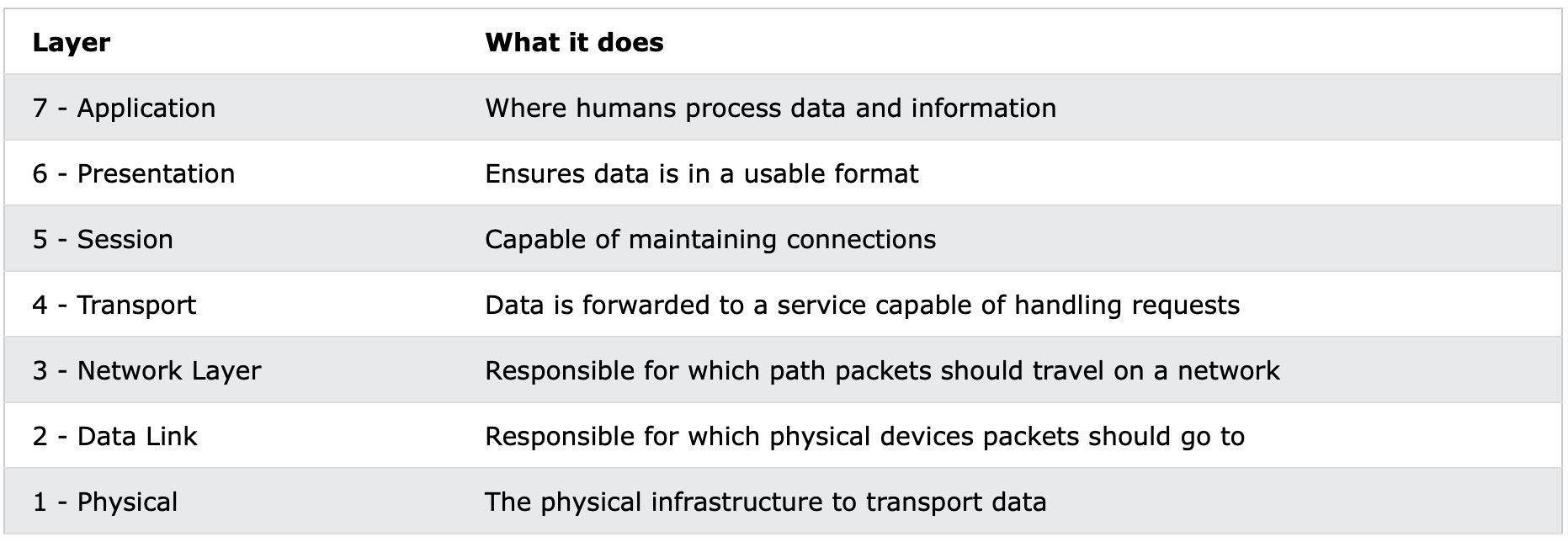# Cyber Security Networking Basics

# Protocols and Networking
It is essential for Cyber Security Professionals to have a solid understanding of how computers communicate. There is much more happening behind the scenes of computer networks than what can be observed when using applications.
# The OSI Model
The OSI ("Open Systems Interconnection") model represents an easy and intuitive way to standardize the different parts required to communicate across networks.
The model makes it clear what is required to communicate on a network by splitting the requirements into multiple layers.
This is what the OSI Model looks like:

The top 3 layers are typically implemented in software within the Operating System:

The bottom 3 layers are typically implemented in hardware within devices on the network, e.g. Switches, Routers and Firewalls:

# Layer 7 - Application Layer
The business logic and functionality of the application lies here. This is what the users use to interact with services across a network. Most developers create applications on the Application Layer.
Most of the applications you use are on the Application Layer, with the complexity of the other layers hidden.
Examples of Layer 7 Applications:
There are many applications which uses these protocols like Google Chrome, Microsoft Skype and FileZilla.
You are accessing this class via Layer 7!
# Layer 6 - Presentation Layer
Typically an unseen layer, but is responsible of adapting, transforming and translating data. This is to ensure the application and layers beneath can understand one another.
# Layer 5 - Session Layer
This layer's responsibility is handling connections between the application and the layers below. It involves establishing, maintaining and terminating connections, otherwise referred to as sessions.
Common protocols which represent the Session Layer well are:
# Layer 4 - Transport
The layer which allows applications to be represented on the network.
Some well known applications on this layer:
# Layer 3 - Network
A layer responsible of routing packets between networks via routers.
On this layer, the following protocols reside:
# Layer 2 - Link
Link networks, as the name implies, consist of protocols designed to send packets through the actual links (physical connections) that network nodes are connected to. A simpler way of thinking of it is that the Link Layer is responsible for moving data from physical over to logical (to the network layer).
Protocols on this layer include:
# Layer 1 - Physical
Physical layer represents the signaling which allows bits and bytes to transfer between a physical medium. It can be transferred via radio or signals over a cable, using electrical signals or light, for example fiber.
Examples of the Physical Layer protocols includes: